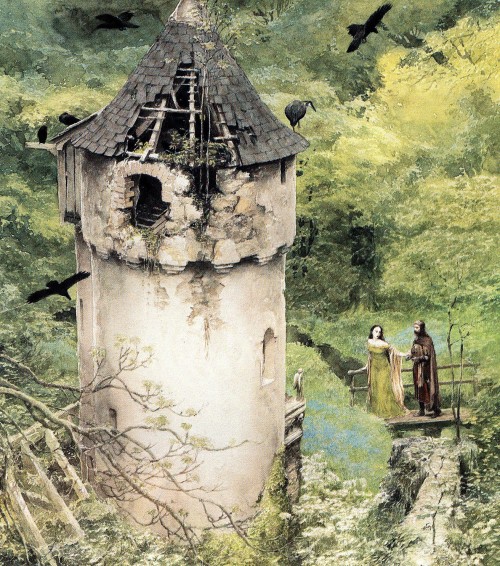My Thoughts Are With Everyone Affected By Hamas' Brutal Attack On Israel, Regardless Of Nationality,
My thoughts are with everyone affected by Hamas' brutal attack on Israel, regardless of nationality, ethnicity or religion, regardless of if they live in Israel, Palestine or Lebanon. Every time someone dies is a tragedy, regardless of what side they are on or what things they did.
עם ישראל חי
More Posts from Enbylvania65000 and Others
It is May but it is still October.
It is still October whenever another hostage's body is found. It is still October whenever another IDF casualty is announced. It is still October whenever the red alert shows up on my phone. It is still October when people chant for "intifada". It is still October when people call for our home to be destroyed. It is still October when people deny what was done to our brothers and sisters. It is still October when people show support for Hamas. It is still October when a new lie about us is believed and spread. It is still October when a former role model wishes us dead.
It is still October.
When will it stop being October?
When October 2024 arrives, will it still be October 2023?


Campbell Gardens by trisharooni

Linguistics Jobs: Interview with a Metadata Specialist and Genealogist
As someone who has built language archives, and spent a lot of time poking around in archives built by other people, I appreciate the importance of well-structured meta-data. It’s good meta-data that tells you what is in the giant pile of data you’re working with, making the whole process much less of a needle-in-a-haystack scenario. Mallory Manley is doing the important work of managing data across multiple languages in the field of genealogy. I appreciate Mallory’s honesty about the challenges of stepping sideways out of linguistics, and sharing that experience with us in this interview. You can follow Mallory on Twitter (@ManleyMallory).

What did you study at university?
I studied a Master of Arts in Linguistics at the University of Essex. My favorite subject in linguistics is morphology, so I continue to study it on my own. What is your job?
I work for a genealogy company as a cataloguer. I receive digital copies of historical records and I organize them by place, record type (birth certificates, census records, etc), and year to prepare them to be published online. I am responsible for records coming from Scandinavia and South Eastern Europe. How does your linguistics training help you in your job?
When I applied for this job, I had no working knowledge of the Scandinavian languages or the languages of Eastern Europe, except for Russian. I definitely oversold my abilities by stating in my cover letter that I could learn any language. But knowing how to analyse language has helped me learn these languages. And being able to identify patterns in language helps me read those documents when I get stuck on words I don’t know or simply can’t decipher. Learning the orthographies of each of these languages has also proved to be a challenge, partly because orthographies change over time, and partly because many of these languages didn’t have a standardized orthography at all until relatively recently. So even though I don’t use my linguistics training as much as I hoped I would in a career, it has helped me succeed in this role. Do you have any advice do you wish someone had given to you about linguistics/careers/university?
I think when we’re young and planning for our future, we get specific ideas about how our career path will look, and it becomes the only path we envision. I had to learn to be flexible and accept changes. My first year of college, I wanted to be a lexicographer (which I still think would be an awesome job). I ended up instead building a career in genealogy, and though it’s not where I expected or planned to be, it has been fulfilling and joyful.
Related interviews:
Interview with a Data Scientist
Interview with a Data Analyst
Recent interviews:
Interview with a Developer Advocate
Interview with an ESL teacher, coach and podcaster
Interview with a Juris Doctor (Master of Laws) student
Interview with the Director of Education and Professional Practice at the American Anthropological Association
Interview with a Research Coordinator, Speech Pathologist
Check out the full Linguist Jobs Interview List and the Linguist Jobs tag for even more interviews
Seriously just ask me anything If I don't want to answer it, I just won't.
reblog if you’d like one of these in your inbox
- ask me things you want to know about me
- why you follow me
- what’s on your mind/what you’re thinking about
- a compliment
- make me choose between two things
- ask for advice
- tell me a secret
- things you associate me with
- anything!!!!









Castles - art by Alan Lee (1984)
Same but I'm terrible at thinking of ways to do this
God i missed you dude but umm, what would you say is your favorite way to add new words to your lexicon? Are you a suffix guy, prefix, infix if you're feeling spicy? Or something else?
For me, the most satisfying coinage is a natural metaphorical extension that I hadn't thought of previously. For example, keligon is "stop" in High Valyrian, and kelinītsos is a pause or a break, but I extended the latter metaphorically to mean "chance" or "opportunity"—a moment when things stop briefly, and you have a chance to do something. Rather than it being your chance, it is your pause: What will you do while things have stopped very briefly, affording you a window of opportunity?
The Middle Rodentocene: 10 million years post-establishment

Canopy Critters: Arboreal Hamsters of the Middle Rodentocene
The Middle Rodentocene has seen massive explosions in hamster diversity, as various species adapted to take advantage of the banquet of different resources available to them in a mostly-vacant planet. And so, with most of the niches on the ground filled one way or another, the hamsters turned to the much un-exploited resources up above: the trees.
A veritable smorgasbord of seeds, nuts, leaves, fruit, bark and various invertebrates, there was more than enough reason for the hamsters to head skyward into the treetops to feast on the abundance. A tree-dwelling life favored those with more flexible paws for gripping, more agile reflexes, and long tails for aiding in balance, and 10 million years PE, the race to the treetops brought about the evolution of a diverse family: the Arbocricetimorpha, a family comprised of the squizzels and spunkmunks (Arbocricetidae) and the kiterats (Volaticricetidae).
The squizzels are among the most diverse forms around in the treetops, occupying virtually any biome possessing trees, such as tropical jungles, temperate forest, and even in the snowy tundras, where some species, such as the snowy ground squizzel (Pilosocaudamys arcticua) nest in the few sparse conifer trees that thrive in the chilly plains, but forage for food mostly on the ground, retreating to the trees only to sleep or to flee from ground-dwelling predators.
Squizzels are omnivores, feeding on a wide variety of food, with the long-nosed squizzels (Ardillacricetus spp.) being noteworthy for their more insectivorous diet, but nuts and other hard-shelled seeds are a particular favorite of the majority, with them storing nuts in holes gnawed into trees as larders for later meals. Many squizzels are gregarious creatures that store enormous hoards of seeds and nuts from the work of at least a dozen related individuals: benefitting them all in particularly cold climates as it improves the chances of survival of them working together as opposed to just hoarding seeds on their own.

But while most other squizzels are sociable, docile creatures that nest in small family groups, one small subclass, the spunkmunks, are notable for their vastly different temperament: highly aggressive and territorial, they are far more solitary than their gregarious peers, and thus defend themselves from predation not by cooperation or advantage in numbers, but simply by being absurdly vicious for their size. In fact, many species are rather poorly camouflaged: conversely, they have bright warning coloration contrasting light, dark, and warm colors easily seen by diurnal predators-- instead of hiding from their enemies, they outright advertise themselves as something not to be trifled with.
One such notable species is the rocking punkmunk (Rufomelanomys thanatometallicum), distinctive for its pronounced sexual dimorphism: females are a drab shade of brown, and are somewhat more tolerant of other females nesting in the same tree, though not as gregarious as other squizzels are. Male punkmunks, however, are fiercely defensive of their territories and the females their range overlaps with, engaging any other male on sight, and try to intimidate rivals with an exuberant display. They erect a crest-like mane of brilliant orange hair running along their backs, stand on their hind legs, and bare their teeth while making unearthly high-pitched screams to attempt to scare off their rival. This display is their first and final warning: if neither competitor backs down, it quickly escalates into a violent struggle that very frequently results in a messy end for the weaker of the two parties, as their sharp teeth, fast reflexes, and ferocious tenacity can lead to bloody wounds, severed paws, gouged eyes, or even outright evisceration-- and subsequent consumption of the loser by the victor.

Meanwhile, on a separate branch of the family tree from both their gregarious, cooperative cousins and their aggressively-antisocial ones are the kiterats (family Volaticricetidae), a lineage more commonly found in the forest grasslands: areas where small, dense bunches of trees are spread unevenly across thick grassland. With trees being too far away from each other to simply jump too, and the multitude of dangers lurking in the tall grass below, the kiterats instead opt to take to the air: converging heavily on a wide array of unrelated gliding mammals found on Earth.
Kiterats posses stretchy membranes of skin between their wrists and ankles, acting as gliding surfaces as they leap from one tree to another. Flat, feather-like tails act as rudders to change direction and control their descent, and with a good tailwind can easily travel up to 100 feet in a single glide. This enables them to travel quickly and efficiently across the sparse canopy, searching for food, escaping enemies, and tracking down mates as they journey across the treetops.
But of notable interest is one highly unusual kiterat that stands out among the twenty or so species in the Middle Rodentocene: the flittering jazzhand (Protopteramys razzli), the only member of its genus. Its divergence is evident from its broad, webbed hands, which specialized to catch flying insects midair --indeed, it differs from most other omnivorous kiterats by its almost-obligate insectivory-- which it grabs midair with a downstroke clap of its arms. However, these webbed hands serve more than to just act as bug-catching nets: they also increase the jazzhand's gliding surface in order to traverse longer distances than its solely-patagium-based cousins. They are also known to twitch their webbed hands mid-glide in order to gain lift and prolong their glides, and coupled with their insect-seizing clapping motion, would gradually give rise to a stronger flapping downstroke- the beginning of powered flight.

The Arbocricetimorpha, however, are not alone in the trees. A completely separate lineage, the bossums (family Didelphocricetidae) have also colonized the trees at this point. More closely related to the fearrets than they are to the other tree-dwellers of the era, the bossums thrive primarily as arboreal insectivores in dense, tropical jungle.
With grasping paws bearing semi-opposable thumbs and long, flexible tails, the bossums are highly agile and acrobatic in the trees. Most species simply use their tails as counterbalances, as well as tufted flags for signaling, though one species, the speckled bossum (Didelphocricetus variegata), has adapted its tail into a surprisingly-prehensile grasping organ, acting almost as a fifth limb while it clambers about in the treetops.
Most bossums feed mostly on insects, and many species which ambush pollinators among flowers and fruit have taken a liking to the flowers and fruit themselves. However, one genus, Dirodidelphis, has turned its attention from simply bugs and berries, toward another equally-abundant food source in the treetops: other arboreal rodents. The largest species, the tiger bossum (Dirodidelphis pantheri), is roughly the size of a small house cat and is the apex predator of the treetops as of the Middle Rodentocene, hunting squizzels, kiterats and even smaller bossum species as well. Agile in the treetops and able to scale vertical branches and leap from tree-to-tree in a manner akin to the Madagascan fossa of Earth, this canopy carnivore is well-suited for a high-living life, also managing to avoid competition with its distant cousins, the fearrats, which hunt prey on the forest floor and seldom if ever ascend to the trees.
▪▪▪▪▪▪▪▪
-
 sabottori liked this · 1 year ago
sabottori liked this · 1 year ago -
 lilythingz liked this · 1 year ago
lilythingz liked this · 1 year ago -
 thatpacifictheatregirlie liked this · 1 year ago
thatpacifictheatregirlie liked this · 1 year ago -
 csg-iii liked this · 1 year ago
csg-iii liked this · 1 year ago -
 ameliathefatcat liked this · 1 year ago
ameliathefatcat liked this · 1 year ago -
 enbylvania65000 reblogged this · 1 year ago
enbylvania65000 reblogged this · 1 year ago

